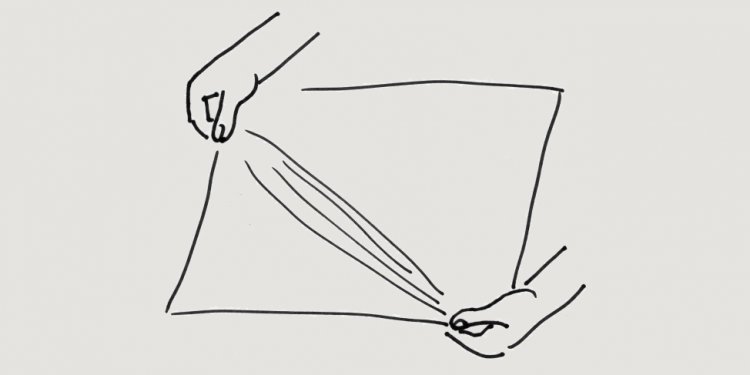
Woven Gauze fabric
Each issue, Apple Bites brings you a tool you can apply in your daily practice.
Medical gauze, a bleached white cloth or fabric used in bandages, dressings, and surgical sponges, is the most widely used wound care dressing. Commonly known as “4×4s, ” gauze is made from fibers of cotton, rayon, polyester, or a combination of these fibers. Surgical gauze must meet standards of purity, thread count, construction, and sterility according to the United States Pharmacopeia.
Gauze offers a variety of options—woven or nonwoven, sterile or nonsterile, plain or impregnated, and fenestrated (perforated or with slits)—and is available in various sizes, shapes, and thicknesses.
Matching the correct type of gauze dressing to the wound is essential to successful wound healing.
Woven gauze. Woven gauze has a loose, open weave, which allows fluids from the wound to be absorbed into the fibers, wicked away, or passed through into other absorbent materials in the wound’s dressing. Most woven products are a fine or coarse cotton mesh, depending on the thread count per inch. Fine-mesh cotton gauze is often used for packing, such as in a normal saline wet-to-moist dressing, whereas coarse-mesh cotton gauze, such as a normal saline wet-to-dry dressing, is used for nonselective debriding. Woven gauze shouldn’t be cut and placed in a wound because loose fibers (lint) may get lost in the wound and delay healing.
Nonwoven gauze. Nonwoven gauze consists of fibers pressed together to resemble a weave, which provides improved wicking and greater absorbent capacity. Compared to woven gauze, this type of gauze produces less lint and has the benefit of leaving fewer fibers behind in a wound when removed. Most nonwoven gauze dressings are made of polyester, rayon, or blends of these fibers and are stronger, bulkier, and softer than woven pads.
- Impregnated dressings—These gauze dressings are coated or saturated with pharmaceutical materials, such as petroleum jelly, oil or water emulsion, hydrogel, iodine, or antimicrobials.
- Wrapping gauzes—Used for securement, padding, and protection, these dressings may include cotton, elastic, or a nylon and rubber mix, and have a fluff dried with crinkle-weave pattern.
- Sponges—A sponge, often referred to as a gauze pad, is a piece of gauze folded into a square. Common sizes are 2×2 and 4×4.
Gauze can be used for cleansing, packing, scrubbing, covering, and securing in a variety of wounds.
Closely woven gauze is best for extra strength or greater protection, while open or loose weave is better for absorbency or drainage.
When it comes to packing for a wound, use a single gauze strip or roll to fill deep ulcers as opposed to multiple single gauze dressings (2×2s or 4×4s) because retained gauze in the ulcer bed can serve as a source of infection.
For many years, woven gauze was used in the wet-to-dry wound treatment. This treatment consisted of applying moistened saline gauze to the wound bed and, when the gauze was dry and embedded into the wound tissue, ripping it out to debride necrotic tissue from the wound. Many studies and clinical practice guidelines now discourage—and even condemn—the use of wet-to-dry gauze for treatment of wounds. When other forms of moisture-retentive dressings aren’t available, continually moist gauze (wet to moist) is preferable to the wet-to-dry treatment.
Selected references
Hess CT. Skin and wound care products. In: Hess CT. Clinical Guide To Skin And Wound Care. 7th ed. Philadelphia, PA: Wolters Kluwer Health/Lippincott Williams & Wilkins: 2013.
National Pressure Ulcer Advisory Panel, European Pressure Ulcer Advisory Panel and Pan Pacific Pressure Injury Alliance. Prevention and Treatment of Pressure Ulcers: Quick Reference Guide. Emily Haesler, ed. Osborne Park, Western Australia: Cambridge Media; 2014.
Rolstad BS, Bryant RA, Nix DP. Topical management. In: Bryant RA, Nix DP, eds. Acute and Chronic Wounds: Current Management Concepts. 4th ed. St. Louis, MO: Elsevier Mosby; 2012:289-306.
Nancy Morgan, cofounder of the Wound Care Education Institute, combines her expertise as a Certified Wound Care Nurse with an extensive background in wound care education and program development as a nurse entrepreneur.
Information in Apple Bites is courtesy of the Wound Care Education Institute (WCEI), copyright 2015.
DISCLAIMER: All clinical recommendations are intended to assist with determining the appropriate wound therapy for the patient. Responsibility for final decisions and actions related to care of specific patients shall remain the obligation of the institution, its staff, and the patients’ attending physicians. Nothing in this information shall be deemed to constitute the providing of medical care or the diagnosis of any medical condition. Individuals should contact their healthcare providers for medical-related information.

















